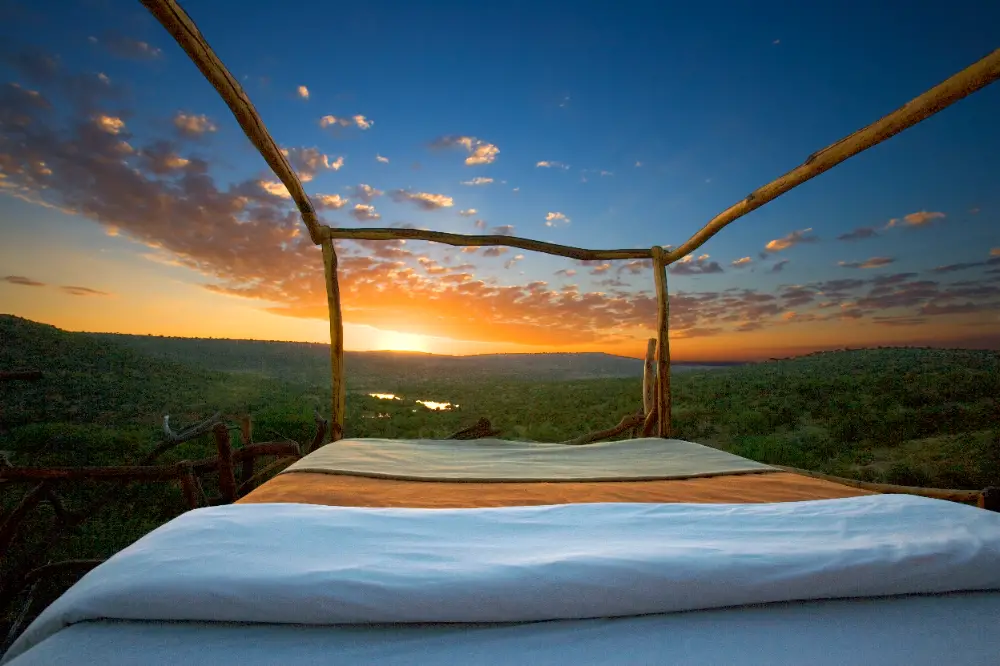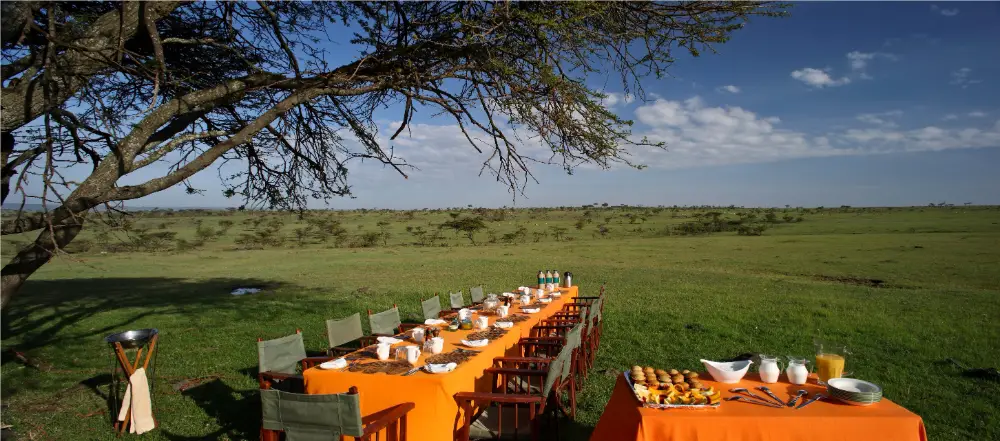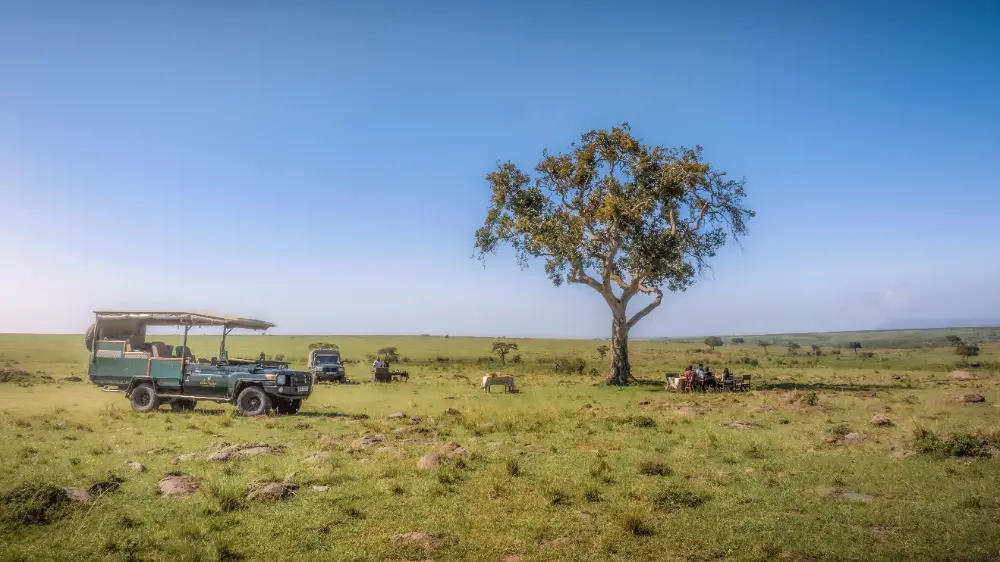Overview
One of the most famous wildlife spectacles in Kenya / Tanzania is the annual migration of wildebeests and zebras in the Maasai Mara & Serengeti. This massive movement of animals is a breathtaking sight, as over two million animals cross the Mara River in search of greener pastures. The migration also attracts several predators, such as lions and hyenas, making it a unique and thrilling experience for tourists and wildlife enthusiasts.
Activities & Transportation

pop-up roof 4x4 vehicle

Site Seeing

Multiple activities for kids

Pick Up & drop

Games & Many More
Summary for a migration safari
| Months | Season | Location |
|---|---|---|
| February/March | Calving season | Southern Serengeti |
| April/May | Breeding season | Western & Central Serengeti |
| May/June | Grumeti River Crossings | Central Serengeti |
| July/August | Mara River Crossings | Northern Serengeti & Masai Mara |
| November/Dec/January | On the Move | Masai Mara, North to South Seregenti |
January to March
After a bountiful rainy season and an abundance of food and water, the Masai Mara baby boom kicks in. When the plains are brimming with life and young wildebeest, zebra and other herbivore calves are seen dashing through the plains, along come the big cats. It’s the circle of life. The months January through March are known as the ‘Lion season’. With the disappearance of the rains, the grasses become less plentiful and wildlife becomes easier to spot. This is the perfect time of year to spot individual lions, or even a pride of lions, out and about.
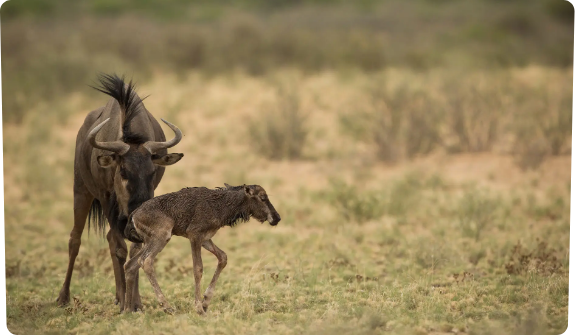
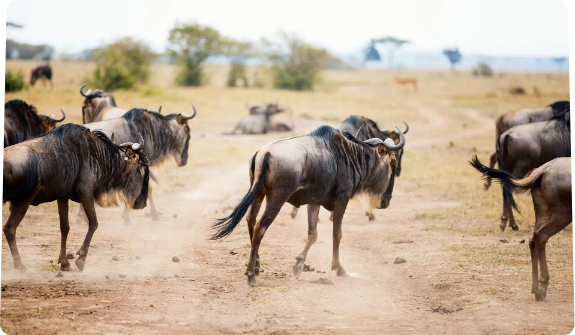
March to May
This time of year is known for the 'long rains' or as the wetter of Masai Mara’s two rainy seasons. It’s still hot during these months, but it’s especially rainy during the month april. On the up-side, the rains ring in a regeneration of local vegetation turning the Masai Mara all shades of green.
June to October
Pleasant temperatures, warm and dry weather, and mostly clear blue skies above. Perfect weather for wildlife safaris and therefore a popular time for safari travel to the Masai Mara and Migration.
Dry Season - June Through October
Pros
Less rain means less vegetation, making it easier to spot wildlife.
Wildlife is more concentrated during the dry season, generally they’ll gather near waterholes and rivers. Lovely weather, less rain. Less mosquitoes means less chance of malaria.
The best time of year to enjoy the Great Migration.
Cons
Most visitors want to see the great Migration, so this time of year is busier and especially the Masai Mara National Reserve proper can see congestion in popular safari areas.
Travel is more expensive this time of year, prices in the rainy season are much more favourable.
Cold evenings and very chilly early morning game drives.
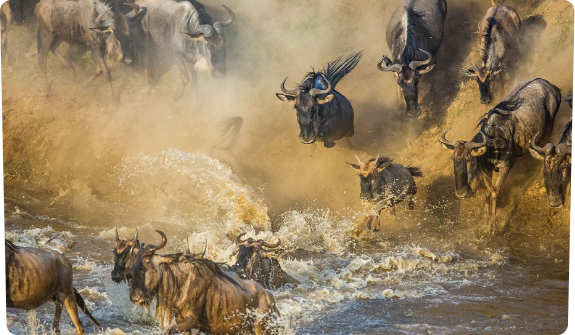
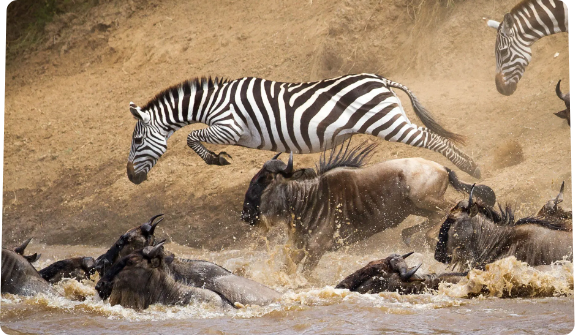
November to December
The last two months of the year ring in the ‘short rains’ or less intrusive of the two rainy seasons. Expect overcast, cloudy skies and rain showers in the afternoons. Temperatures are still high, although the mornings can be rather chilly.






